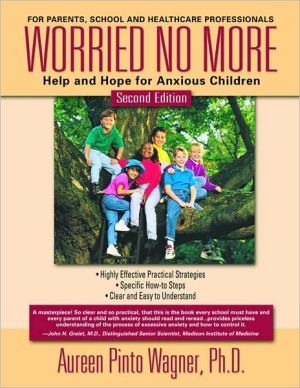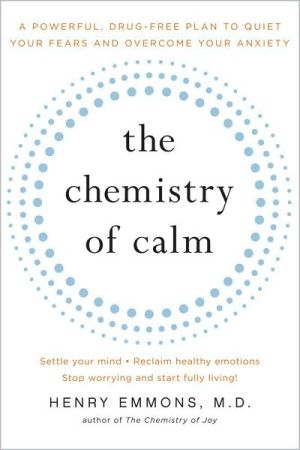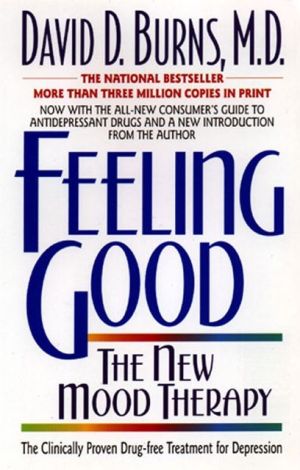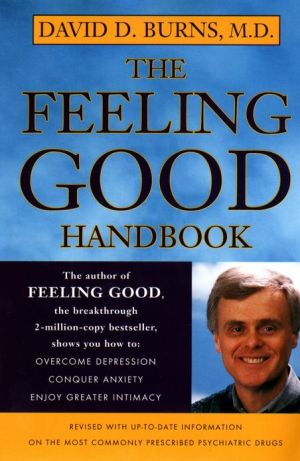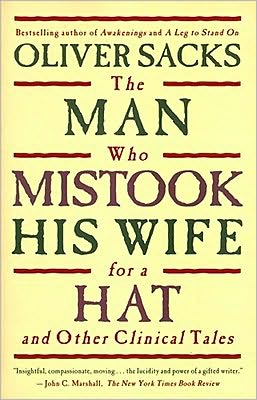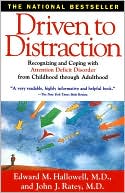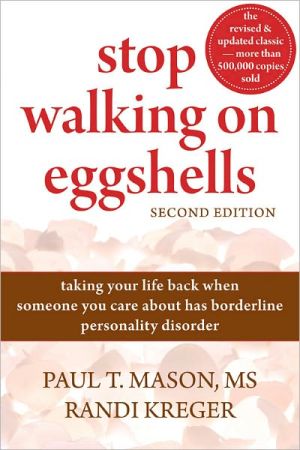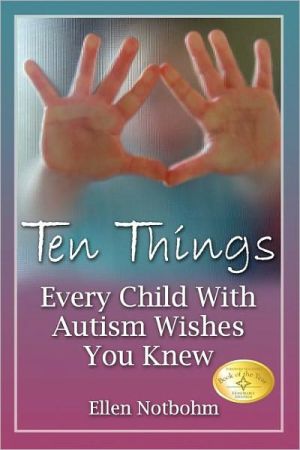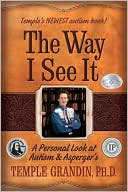Worried No More: Help and Hope for Anxious Children
About 13% or over 6.5 million children and adolescents in the US suffer from serious anxiety, making it the most common emotional problem in youngsters. Anxiety in youngsters is commonly misdiagnosed as attention-deficit disorder (ADD). The good news is that anxiety is the most treatable emotional problem. Success rates with early recognition and proper treatment are excellent! Countless parents, schools and healthcare professionals have come to rely on Worried No More to help youngsters with...
Search in google:
About 13% or over 6.5 million children and adolescents in the US suffer from serious anxiety, making it the most common emotional problem in youngsters. Anxiety in youngsters is commonly misdiagnosed as attention-deficit disorder (ADD). The good news is that anxiety is the most treatable emotional problem. Success rates with early recognition and proper treatment are excellent! Countless parents, schools and healthcare professionals have come to rely on Worried No More to help youngsters with anxiety reclaim the joys of childhood. In her landmark and highly acclaimed book, Dr. Aureen Wagner brings scientifically proven and time tested cognitive-behavioral strategies into the everyday lives of children and families. Her creative, warm and user-friendly approach appeals to children and adults alike. She identifies the red flags and early warning signs of anxiety, and how to tell normal from problem anxiety. Worried No More is packed with information and valuable step-by-step guidance to help children cope with worry, school refusal, separation anxiety, excessive shyness, panic, disasters and tragedies, phobias, obsessions and compulsions. Library Journal These two books build on each other. Written by a clinical psychologist specializing in cognitive-behavioral treatment for anxiety disorders, Help for Worried Kids introduces the topic of childhood anxiety disorders. The text opens with a discussion of the causes of childhood anxiety, its many "faces," and how to identify an anxious child. The second part is dedicated to the disorders themselves, with each chapter offering an in-depth examination that includes prevention, diagnosis, personal narratives, and advice on helping children gain control over fear and anxiety. A good selection of resources, check lists, and worksheets rounds out the text. This book is geared to concerned parents looking for help in determining whether their child's uneasiness is reason for concern. In contrast, Worried No More is geared not only to parents but also to school and healthcare professionals; it reads like a training guide for those with a daily need to understand and help children experiencing serious anxiety. Clinical child psychologist Wagner has a unique approach to making cognitive-behavioral therapy applicable to youngsters. As in the first edition, she begins by identifying normal fears and anxieties and considering when they become problematic. She then addresses the most common anxiety problems and disorders, discussing causes, therapies, and medications and what parents can do to help. Finally, she expands the strategies beyond the family to what schools can do. This book considers challenges and strategies in detail, carefully addressing how a parent can develop a systematic and goal-directed approach with the school to implement an effective action plan for the child there. Though both books are recommended for public libraries, Wagner offers far more tools, practical and well researched, for effectively helping anxious children and is recommended for academic libraries as well.-Kari Ramstrom, MLIS, Plymouth, MN Copyright 2005 Reed Business Information.
Chapter 1Children in the shadow11Chapter 2The many faces of anxiety14Chapter 3Anxiety: Normal and necessary16Normal fears and anxieties in children and adolescents17Normal rituals and superstitions20Age differences in expression of anxiety20When does anxiety become a problem?21When does anxiety become a disorder?22Chapter 4Anxiety problems and disorders in children and adolescents24Separation Anxiety Disorder24Generalized Anxiety Disorder25Specific Phobias26Social Anxiety/Excessive shyness27Obsessive-Compulsive Disorder27Pediatric Autoimmune Neuropsychiatric Disorders Associated with Streptoccocal Infections (PANDAS)29Post-Traumatic Stress Disorder30Panic Disorder32"School Phobia"32Which anxiety disorder is this?34Chapter 5Disorders associated with anxiety35Depression35Tourette Syndrome35Attention Deficit Hyperactivity Disorder36Autism and Asperger's Syndrome37Trichotillomania38Body Dysmorphic Disorder39Delusions, hallucinations and psychosis40Chapter 6The far-reaching effects of anxiety41Chapter 7Warning signs and signals44Chapter 8What causes anxiety disorders in children?47The Fuel for Anxiety48The Anxiety Triad48The Vicious Cycle of Avoidance49Reactions and responses of parents50Stress51Chapter 9Cognitive-Behavioral Therapy for anxiety53Cognitive elements54Behavioral elements60Physical elements68Can young children participate in CBT?69Social Skills Training71Chapter 10Medications for anxiety in children74Chapter 11What parents can do to help77The 3 P's: Proactive, positive and preventive78The 3 S's: Security, structure and stability80Self-reliance82Communication83Appropriate attending84Corrective Learning Experiences86Setting a positive example91Unhelpful reactions and responses92Chapter 12What school personnel can do to help93Education and training94Early detection94Establishment of helping partnerships95Assessment97Consultation and appropriate referral98Provision of a physically and emotionally safe environment99Management of anxiety in school100Preventive strategies103Chapter 13Helping anxious children in school: An action plan105Identify specific concerns105Develop helping partnerships105Conduct systematic assessment106Consult and/or refer108Define and prioritize target behaviors and goals108Design problem-focused interventions110Cultivate the child's treatment-readiness111Apply interventions112Evaluate and modify112An action plan for School refusal/Separation anxiety113Chapter 14Finding the right community partners124Barriers to effective partnerships126Working through the obstacles129Engaging reluctant children130Chapter 15Specific strategies for anxiety-related problems134Normal anxiety134Back to school anxiety135Coping with trauma, tragedy, war and violence136Separation anxiety138School refusal/Tardiness138Reassurance seeking139Perfectionism140Obsessions and compulsions140Writing and reading difficulties141Inability to complete assignments and homework142Social anxiety/Excessive shyness142Panic143Difficulty shifting gears143Refusal to speak in school144Performance/Test anxiety144Tics144Meltdowns and explosiveness145References147Resources149Support Organizations151Forms and tools153Form 1Corrective Learning Experiences Worksheet155Form 2Parent-Teacher Log157Form 3Home Behavior Observations159Form 4School Behavior Observations161Form 5My Thoughts and Feelings163Form 6The Feeling Thermometer165Form 7My Fear Ladder167Form 8Exposure Progress Record169Form 9RIDE Up and Down the Worry Hill Memory Card171Form 10Facing My Fears173Index175
\ Library JournalThese two books build on each other. Written by a clinical psychologist specializing in cognitive-behavioral treatment for anxiety disorders, Help for Worried Kids introduces the topic of childhood anxiety disorders. The text opens with a discussion of the causes of childhood anxiety, its many "faces," and how to identify an anxious child. The second part is dedicated to the disorders themselves, with each chapter offering an in-depth examination that includes prevention, diagnosis, personal narratives, and advice on helping children gain control over fear and anxiety. A good selection of resources, check lists, and worksheets rounds out the text. This book is geared to concerned parents looking for help in determining whether their child's uneasiness is reason for concern. In contrast, Worried No More is geared not only to parents but also to school and healthcare professionals; it reads like a training guide for those with a daily need to understand and help children experiencing serious anxiety. Clinical child psychologist Wagner has a unique approach to making cognitive-behavioral therapy applicable to youngsters. As in the first edition, she begins by identifying normal fears and anxieties and considering when they become problematic. She then addresses the most common anxiety problems and disorders, discussing causes, therapies, and medications and what parents can do to help. Finally, she expands the strategies beyond the family to what schools can do. This book considers challenges and strategies in detail, carefully addressing how a parent can develop a systematic and goal-directed approach with the school to implement an effective action plan for the child there. Though both books are recommended for public libraries, Wagner offers far more tools, practical and well researched, for effectively helping anxious children and is recommended for academic libraries as well.-Kari Ramstrom, MLIS, Plymouth, MN Copyright 2005 Reed Business Information.\ \
